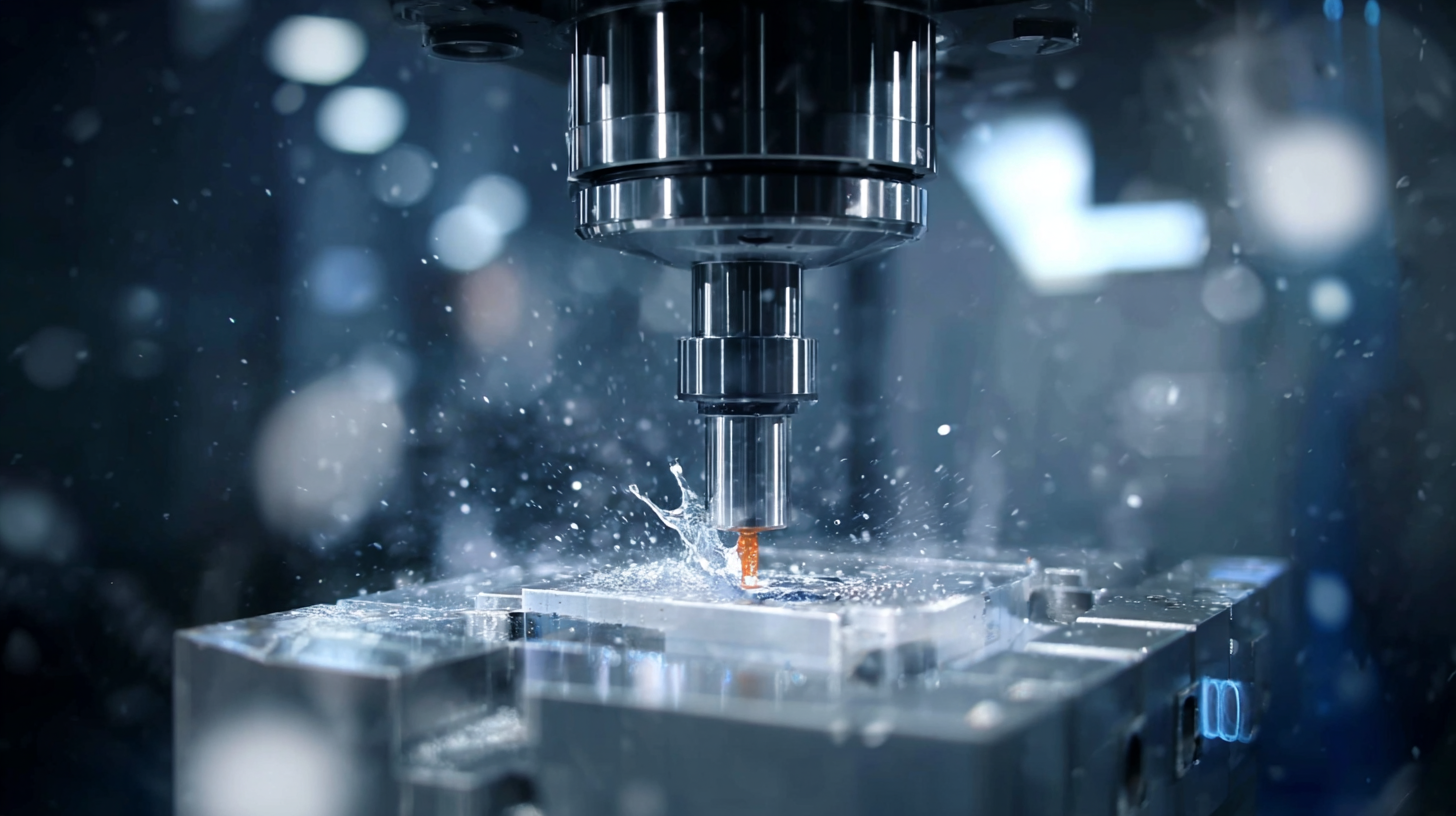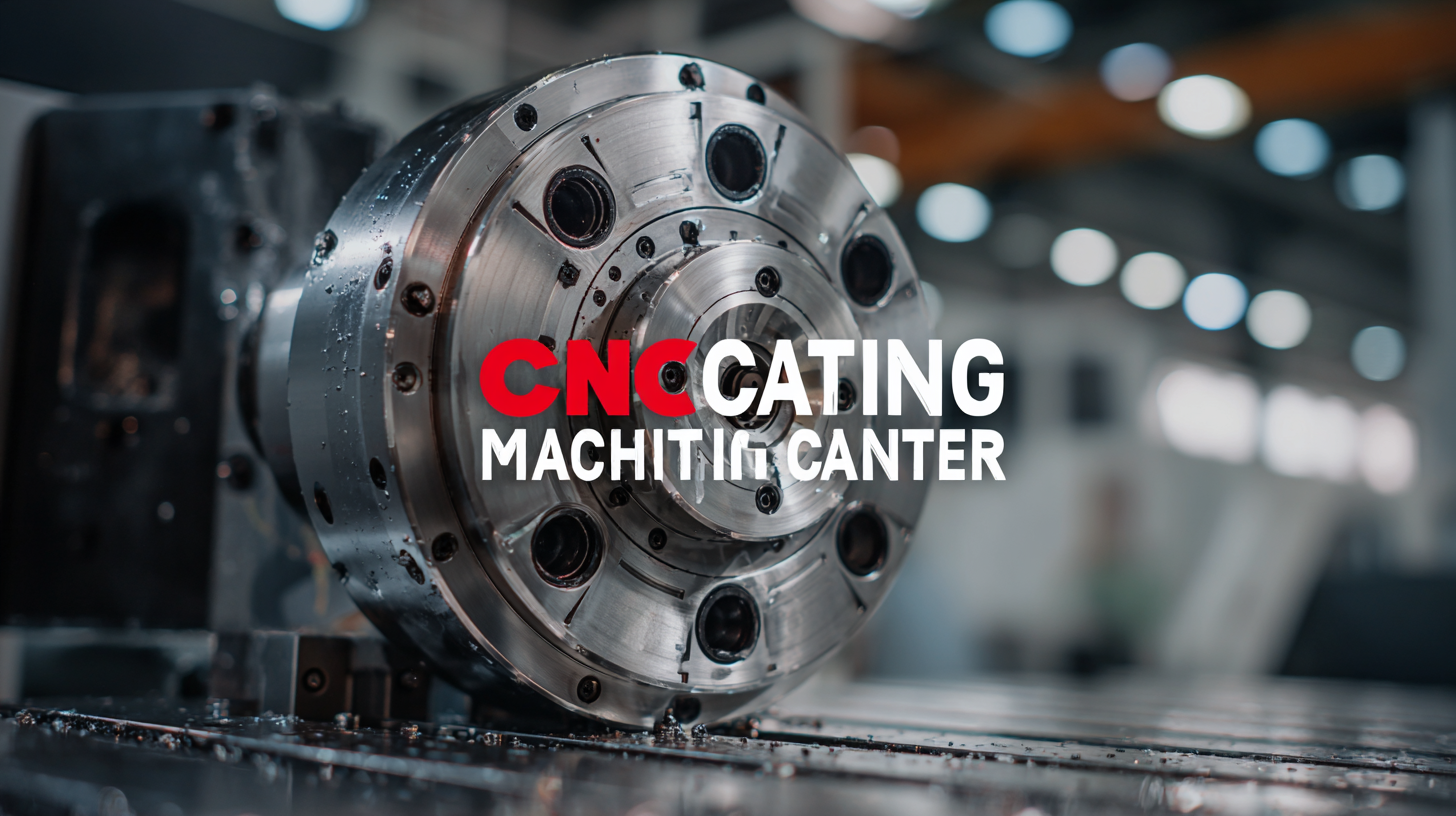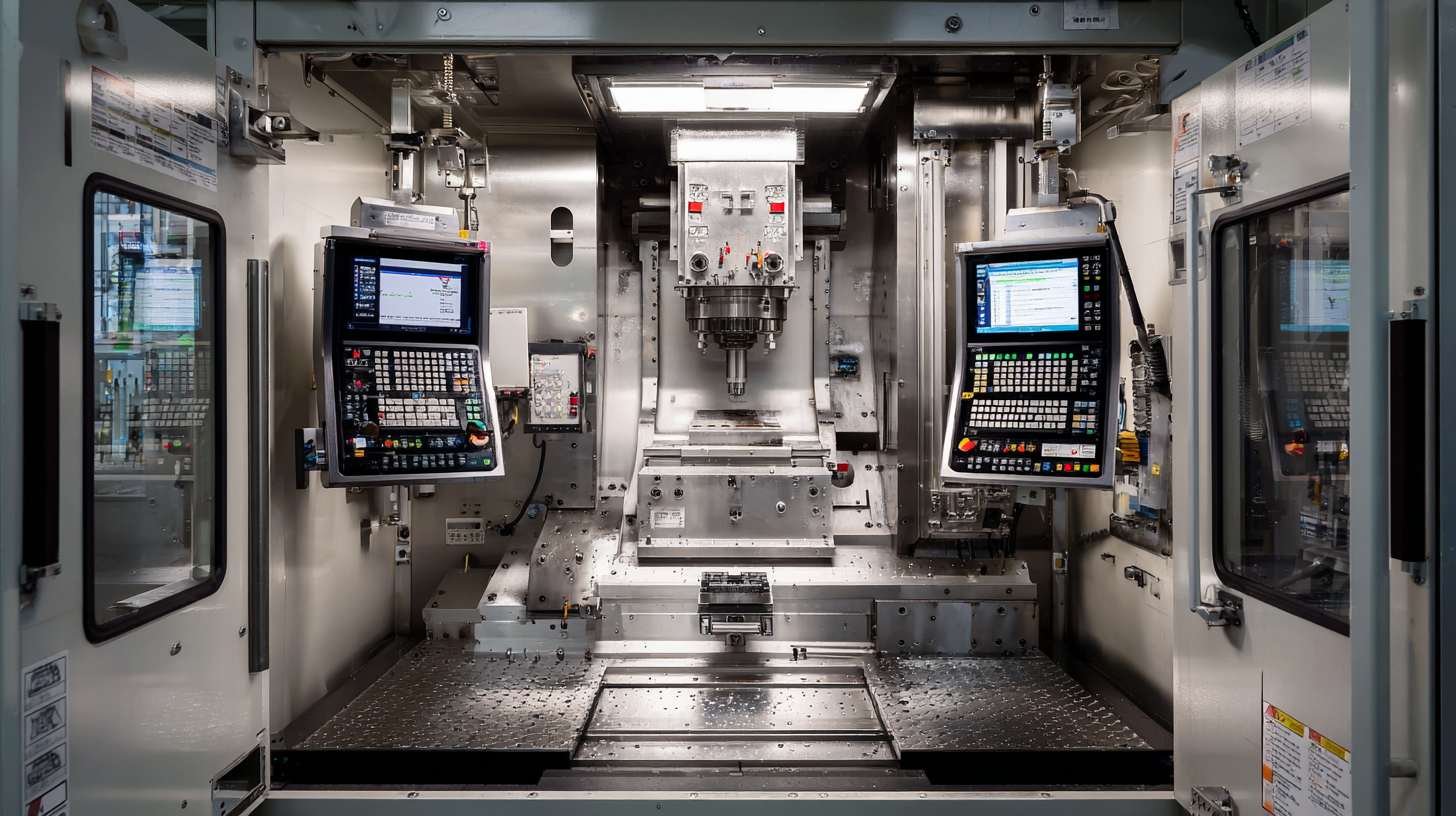In today's highly competitive manufacturing landscape, the adoption of advanced technologies is vital for optimizing operational efficiency and productivity. Among these technologies, the CNC Machining Center stands out as a game-changer, enabling manufacturers to achieve remarkable precision and faster production times. According to a report by SME, integrating CNC machining can improve production efficiency by up to 40%, significantly reducing lead times and enhancing product quality. With the global CNC machine market projected to reach over $100 billion by 2026, the importance of investing in state-of-the-art CNC Machining Centers cannot be overstated. This blog explores seven compelling reasons why leveraging these machining centers can elevate your production efficiency and give you a competitive edge in the industry.

Upgrading to a high-performance CNC machining center offers numerous benefits that can significantly enhance production efficiency. One of the primary advantages is the increased accuracy and precision these machines provide, allowing manufacturers to produce complex parts with minimal errors. This level of precision is particularly crucial in industries such as aerospace, where the slightest deviation can lead to costly failures. With advancements in CNC technology, these machines are designed to handle intricate patterns and details, thus reducing the need for extensive rework and accelerating the production process.

Another key benefit of modern CNC machining centers is their ability to streamline workflows, minimizing downtime and maximizing productivity. As companies shift from older vertical machining centers to more efficient horizontal ones, they often experience improvements in operational value that outweigh the initial investment costs. The implementation of automation and AI capabilities in machine operation also contributes to optimizing workloads and eliminating bottlenecks, further enhancing efficiency. These enhancements not only elevate production levels but also enable manufacturers to better serve their customers by delivering high-quality products in a timely manner.
CNC machining centers have revolutionized manufacturing by offering precision and efficiency. One of the key features that elevate production efficiency is their multi-axis capability. Unlike traditional machining tools that operate on a single axis, modern CNC machines can maneuver on multiple axes simultaneously. This capability drastically reduces the time required for setup and machining, allowing manufacturers to produce complex parts without multiple setups, thereby maximizing throughput.

Another vital feature is the integration of advanced automation systems. Many CNC machining centers are equipped with automatic tool changers and capable of performing unattended operations. This not only minimizes human error but also enables continuous production, freeing up skilled operators for more critical tasks. Additionally, real-time monitoring and diagnostics enhance operational efficiency by allowing for immediate adjustments and troubleshooting, ensuring that production runs smoothly without interruptions. These features collectively contribute to an optimally efficient production environment, setting CNC machining centers apart from conventional manufacturing approaches.
Automation has become a game-changer in the manufacturing sector, particularly in CNC machining centers. According to a report by Technavio, the global CNC machine market is expected to grow by $24.64 billion from 2021 to 2025, driven significantly by automation. This advancement not only streamlines operations but also minimizes human error, leading to more accurate and consistent production outputs. For instance, automated CNC machines can maintain higher precision levels, achieving tolerance levels as tight as ±0.005 mm, which is crucial for industries such as aerospace and automotive.
Moreover, the integration of advanced software in CNC machining centers allows for real-time monitoring and adjustments, further enhancing production speed. A study by Deloitte highlighted that companies adopting smart manufacturing practices have seen productivity increases of up to 30%. This real-time capability enables manufacturers to quickly respond to changes in order requirements or material availability, ultimately reducing downtime and maximizing efficiency. In a rapidly evolving market, embracing automation in CNC machining is not just advantageous; it is essential for staying competitive.
| Reason | Description | Impact on Production Efficiency |
|---|---|---|
| 1. Increased Precision | CNC machines offer high accuracy, significantly reducing material waste and rework. | Enhances overall productivity by minimizing errors. |
| 2. Automation Features | Automated tool changes and cycle times allow for continuous operation. | Lowers downtime and increases throughput significantly. |
| 3. Reduced Labor Costs | Less manual intervention is needed, leading to lowered staffing expenses. | Improves cost efficiency across production lines. |
| 4. Enhanced Flexibility | Quickly switch between different production runs without extensive reconfiguration. | Facilitates better resource utilization and faster market responsiveness. |
| 5. Smart Technology Integration | IoT and AI technologies allow real-time monitoring and predictive maintenance. | Increases uptime and extends machine life through timely interventions. |
| 6. Improved Workflow | Streamlined operations with optimized processes replace less efficient manual tasks. | Results in faster cycle times and enhanced production flows. |
| 7. Data Analytics | Utilizing data collection for analysis improves decision-making and process optimization. | Heightened production efficiency and quality control through data-driven insights. |
In the realm of CNC operations, effective tool management is crucial for maximizing production efficiency. Proper tool management not only simplifies the tracking of cutting tools but also reduces downtime by ensuring that the right tools are available when needed. Advanced tooling management software plays a pivotal role in this process, enabling real-time access and control over production resources through cloud connectivity. This accessibility facilitates seamless communication among team members, enhances decision-making, and ultimately contributes to a more streamlined workflow.
Incorporating intelligent features into CNC operations can significantly enhance overall performance on the shop floor. Automation technologies, such as robots for loading and unloading materials, complement effective tool management by optimizing material handling processes. This synergy between automation and tool management not only mitigates human error but also fosters an environment where operators can dedicate more time to value-added tasks, ultimately leading to improved productivity and efficiency. By prioritizing these aspects, CNC users can elevate their operational capabilities and achieve higher levels of manufacturing excellence.
This bar chart illustrates the various factors contributing to the production efficiency in CNC machining centers. Effective tool management stands out as the most critical element, underscoring the importance of organized and strategic approaches in CNC operations.
Maximizing the output of your CNC machining center requires a blend of optimal practices and strategic planning. First and foremost, regular maintenance is key. Ensuring that your equipment is functioning at peak performance can prevent costly downtimes and help maintain precision across all operations. Scheduling routine inspections and part replacements not only extends the life of the machine but also enhances its productivity.
Additionally, investing in employee training cannot be overstated. Skilled operators who understand the intricacies of the CNC machining process can make a significant difference in production efficiency. Training programs focusing on the latest technologies, programming techniques, and troubleshooting can empower your team to leverage the full potential of the CNC machining center. Furthermore, optimizing workflow by organizing tools and materials effectively reduces idle time, allowing for a smoother, more efficient production line. This combination of maintenance and skilled operation lays the groundwork for maximizing output while ensuring quality and consistency in the final products.
